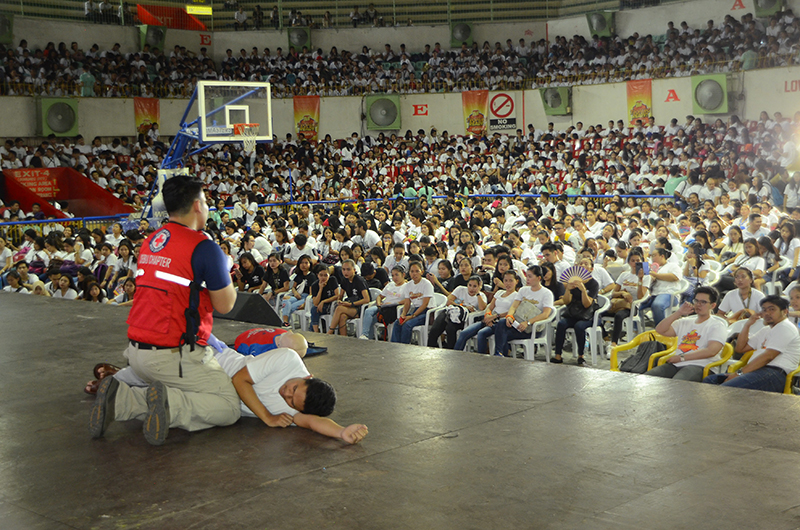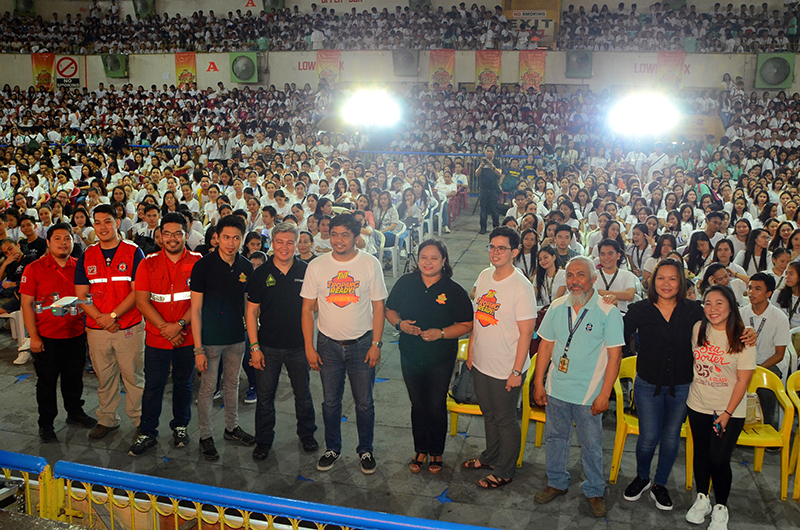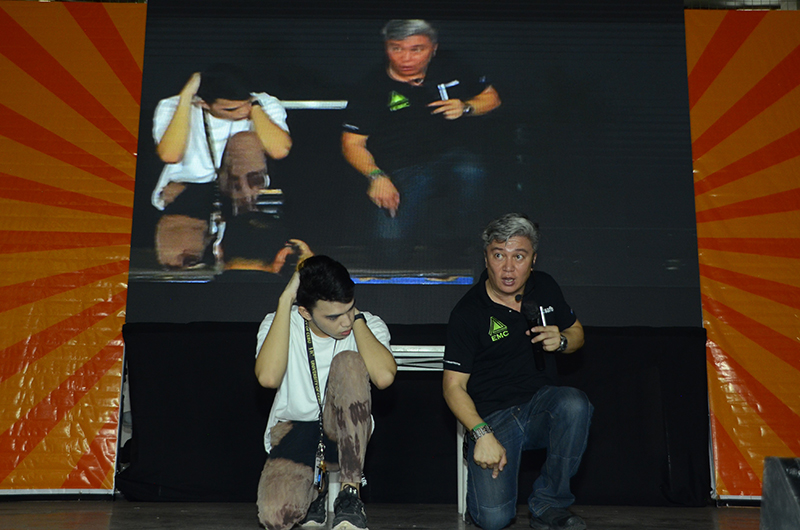With the goal of instilling the culture of disaster readiness among the youth, PLDT wireless unit Smart Communications (Smart), in partnership with the University of Cebu (UC) faculty and the Philippine Red Cross (PRC), gave students valuable insights on survival tactics and protocols for common calamities in the Philippines, such as earthquakes, typhoons, fires, and landslides.

Over 7,000 UC students congregated at the Cebu City Coliseum for the TNT Tropang Ready Caravan, a nationwide program initiated by Smart featuring talks, presentations and activities on disaster preparedness.
“Calamities are unforeseeable so it’s always good to be prepared every day,” said Cydar Alexis Oraiz, head coordinator of UC CARES. “It is essential that we are constantly trained and equipped with all the necessary skills in order to be ready all the time, especially during times of disasters,” he said.
As an example, the landslide in Naga, Cebu, late last year was one of the major disasters that struck the province, with reported casualties of 18 among the injured, 78 deaths, and 5 missing persons.
“It was apparent that most of the residents in the affected area of Naga were in disbelief of the tragedy that befell them,” said Mohammad Manalao, chapter service representative for disaster management services of PRC, and member of the support team that dispatched rescue operations during the catastrophe. “Even in our area, we can’t say that we are fully prepared for disasters but thanks to the continuous information sharing from LGUs and social media as well as disaster preparedness workshops like this, we are getting there.”

The TNT Tropang Ready Caravan touched on several survival procedures, from emergency response skills and proper CPR techniques, to the use of the Morse code to communicate. As a supplemental activity, the PRC put together a Virtual Reality (VR) survival game that enabled students to gauge their level of preparedness when inside a sinking ship.
“The responses we got from the students are very uplifting,” said Victor Morana, a PRC volunteer. “Knowing what to do during a calamity is vastly different from actually being in that scenario. The students who tried the VR game, although clearly stressed, were knowledgeable about how to act when inside a sinking ship.”
For second year student and volunteer caravan facilitator Analee Dais, “edutainment” formats like this are the way to go. “I think a format where entertainment is inserted in between valuable disaster preparedness talks allows students to retain the learnings that they acquired because they are having fun in the process. It’s very effective because it catches the students’ attention.”

Her colleague Jeremias Geolin, who studies general sciences, agrees with her sentiment, saying information available on the internet is also a valuable resource for disaster preparedness. “Through the internet, we can access plenty of educational resources that will help us prepare for natural calamities,” he said.
The TNT Tropang Ready Caravan highlights the importance of arming students with the necessary skills so they can effectively assist in mobilizing community members in disaster situations. This is a mindset shared by second year UC student Mark Kien Inocando. “The skills and insights I gained from the caravan could save lives in times of calamities. I will definitely share my learnings,” he said.
Now on its third year of providing disaster preparedness trainings to the youth, the TNT Tropang Ready Caravan is part of Smart’s #SafePH advocacy.
Liked this post? Follow SwirlingOverCoffee on Facebook, YouTube, and Instagram. //
